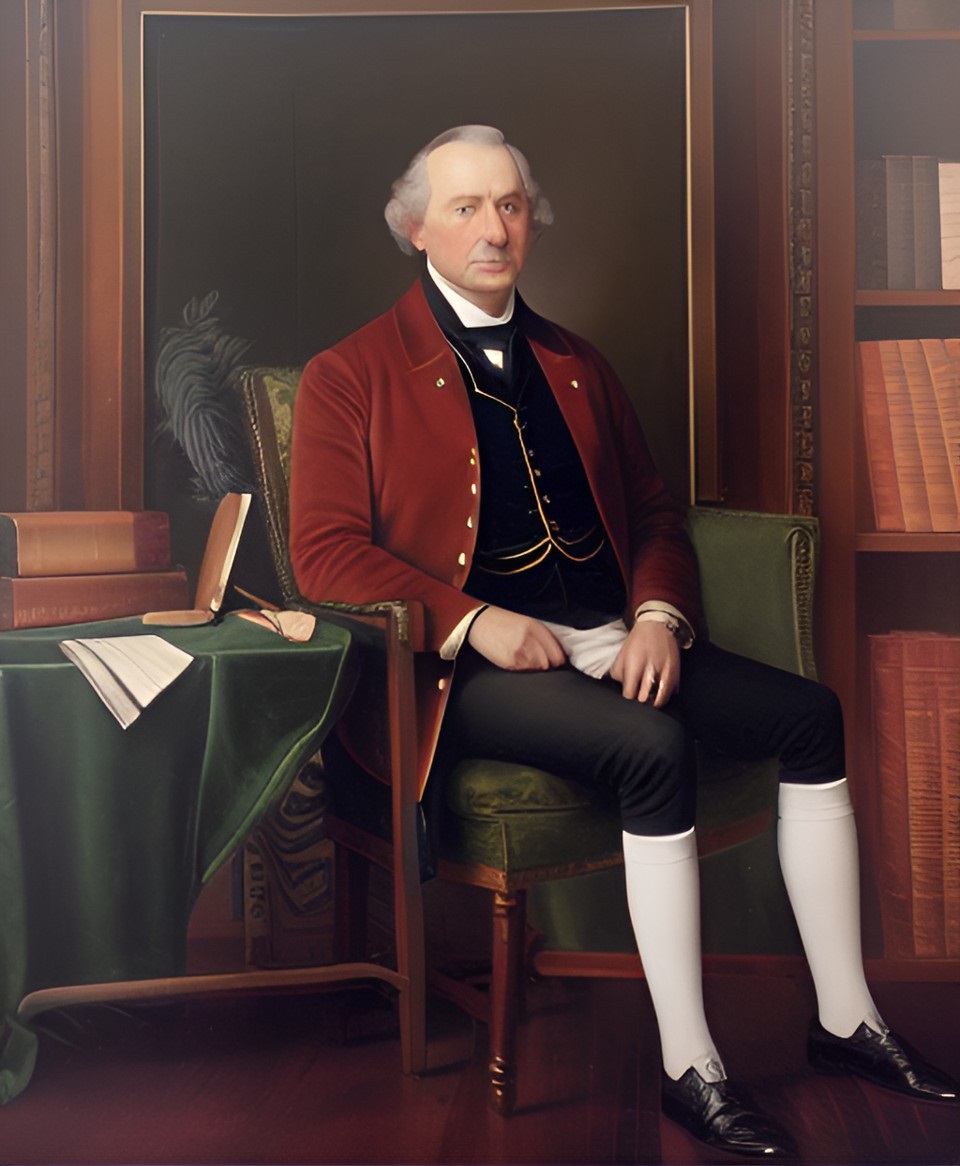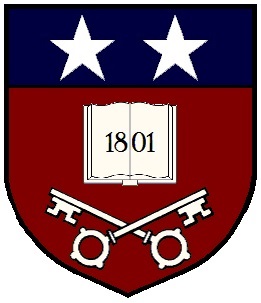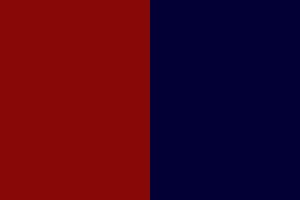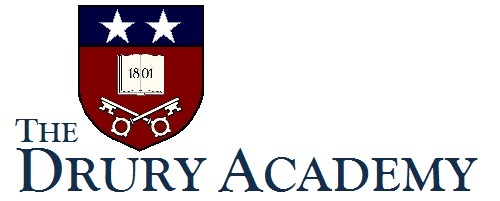Drury Academy
The Drury Academy (/ˈdrʊə ri/), also known as Drury or The D.A., is an independent, highly selective college preparatory boarding school for boys, located in Madbury, New Hampshire. It is generally regarded as one of the most elite boarding schools in the United States. Founded in 1801, it is among the oldest and most prestigious secondary educational institutions in the country.
Established to educate boys from upper class New England families, The Drury Academy has provided instruction to generations of the social and political elite of the region. A Drury education traditionally prepared its students to attend Litchmoor, just as Exeter prepped its students for Harvard, Andover for Yale, and Lawrenceville for Princeton. The school has produced a long list of notable alumni, including several U.S. senators, congressmen, and ambassadors, three cabinet secretaries, two Pulitzer Prize winners, a Nobel laureate and a vice president.
Admission to The Drury Academy is highly competitive, with an acceptance rate of 12.3% for the most recent enrollment period. Its 495-acre rural campus currently serves 691 students and a faculty of 132, all of whom reside on campus during the school year. Drury grads matriculate at some of the finest colleges and universities in the world, with the latest Sixth Form sending most of its graduating class to Harvard, Yale, Litchmoor, Columbia, Brown, Dartmouth, and Georgetown.
Drury is accredited by the New England Association of Schools and Colleges (NEASC). It is a member of the Seven Schools Association (SSA) and the Northeastern Schools Admissions Organization (NSAO). With a current endowment of $78.3 million, The Drury Academy ranks fourth in financial strength among members of the SSA. Drury competes as a founding member in the Independent School League (ISL), the oldest independent school athletic association in the United States.
The first interscholastic ice hockey game ever played in the United States was a match between Drury and Saint Paul’s School in Concord, which took place on the Lower School Pond at Saint Paul’s on November 14, 1884. Although no written record of the contest survives, oral tradition at both schools holds that it ended in a 4 – 4 tie.
In 1804, the first classroom building was erected. Now called Drury Hall, it currently houses the Academy’s administrative offices. The following year, the first dormitories were constructed, and in 1807 the first library building was built, to which Thomas Drury donated his personal collection of over 100 books. As student enrollment increased, additional faculty were added to meet the growing demand. By 1815, 10 masters were instructing over 100 resident students.
Competitive sport and work on the farm were integral components of Drury’s educational philosophy, which incorporated a “whole person” approach to teaching and learning. Boys were expected to complete their classroom work by early afternoon, followed by several hours of labor in the fields or the milking barn to “learn the satisfactions that come with earning one’s room and board.” Evenings and weekends were devoted to more recreational forms of exercise, such as ice skating in the winter, hiking or swimming in the warmer months, and team sports throughout the year.
Upon the death of Squire Drury, as he was fondly known to students and faculty alike, a formal Board of Trustees was created to assume ownership of the property and take over administration of the school. Rev. Ephraim Abel Archer, nephew of Thomas Drury, was brought in as the second Headmaster. It was at that time that the school formally assumed the name of “The Drury Academy.” Rev. Archer oversaw the building of the school's first chapel in 1830.
In 1860, the Board of Trustees appointed Nash P. Gillespie to be the school’s fourth Headmaster. Assuming leadership of the school during an extremely difficult time, he would ably guide its fortunes for nearly forty years. In the words of Litchmoor University history professor Bryant W. Estes, “During his extended tenure, Headmaster Gillespie transformed Drury Academy from an obscure rural schoolhouse into a nationally renowned boarding-school with a sterling reputation for academic excellence.” Most of the current campus buildings were constructed during Gillespie's tenure, including the Caldwell Auditorium, the Mechanical Arts building and the "Lower Commons" dining hall. The beloved "New Library," built under Headmaster Gillespie's leadership in 1881, was replaced in 1955 and now serves as a research and conference center.
In 1935, under the leadership of Headmaster Fabian K. Mays, Drury adopted the “Harkness Method” of educating its students in the “seminar style,” which had been previously adopted at nearby Phillips Exeter Academy. Promoted by philanthropist Edward Harkness, the method involves a teacher and a small group of students, usually no more than a dozen, who exchange ideas and information collaboratively, with each individual student encouraged to contribute to the discussion, similar to the Socratic method. Classes are conducted around a large table, so all students can face each other, as well as their teacher, and interact more freely. Most courses at Drury are still taught in this fashion, the only exception being subjects requiring laboratory work.
The current Headmaster is Meriwether C. Hicks, PhD, who has served in the role since 1951, the school's sesquicentennial. Before coming to Drury, he was Chair of the Classics Department at Dartmouth College. A member of the Drury Class of 1920, he is the first alumnus to return as Headmaster. During his tenure, Dr. Hicks has worked to refine the school’s admissions process, in order to expand opportunities for a Drury education to a broader range of potential students.
Scenic Putney Brook flows through the campus on its way to join the Oyster River at Wheelwright Pond in Durham, pausing briefly at picturesque Library Pond, a focal point of the campus center, created in 1843 with the installation of a small dam and sluicegate. Overlooking the aptly-named pond, the new Fabian K. Mays Memorial Library, which replaced the "New Library" in 1955, currently holds over 77,000 volumes.
The school has 15 residential houses, five Lower School and ten Upper School, which provide dormitory and dining facilities to between 40 and 50 students each. Faculty housing is also provided by the school. Instruction takes place in seven classroom buildings, clustered around the central lawn. Beyond the academic buildings are several athletic fields. The athletic facilities also include a modern gymnasium and field house, as well as boat houses on Winniconic Lake.
The clubs also provide a pool of mentors for newer students, and facilitate the creation of enduring bonds of friendship and camaraderie among their members. Each Athletic Club has a clubhouse on campus. Likewise, each Rowing Club has a boathouse on Winniconic Lake. Most alumni associate with their clubs as strongly as they do with the school itself, and can often be seen wearing their club neckties at Reunion Weekend.
Established to educate boys from upper class New England families, The Drury Academy has provided instruction to generations of the social and political elite of the region. A Drury education traditionally prepared its students to attend Litchmoor, just as Exeter prepped its students for Harvard, Andover for Yale, and Lawrenceville for Princeton. The school has produced a long list of notable alumni, including several U.S. senators, congressmen, and ambassadors, three cabinet secretaries, two Pulitzer Prize winners, a Nobel laureate and a vice president.
Admission to The Drury Academy is highly competitive, with an acceptance rate of 12.3% for the most recent enrollment period. Its 495-acre rural campus currently serves 691 students and a faculty of 132, all of whom reside on campus during the school year. Drury grads matriculate at some of the finest colleges and universities in the world, with the latest Sixth Form sending most of its graduating class to Harvard, Yale, Litchmoor, Columbia, Brown, Dartmouth, and Georgetown.
Drury is accredited by the New England Association of Schools and Colleges (NEASC). It is a member of the Seven Schools Association (SSA) and the Northeastern Schools Admissions Organization (NSAO). With a current endowment of $78.3 million, The Drury Academy ranks fourth in financial strength among members of the SSA. Drury competes as a founding member in the Independent School League (ISL), the oldest independent school athletic association in the United States.
The first interscholastic ice hockey game ever played in the United States was a match between Drury and Saint Paul’s School in Concord, which took place on the Lower School Pond at Saint Paul’s on November 14, 1884. Although no written record of the contest survives, oral tradition at both schools holds that it ended in a 4 – 4 tie.
HISTORY
It was in September of 1801 that Litchmoor-educated lawyer Thomas Archer Drury first took students into his Madbury home for the purpose of instructing them in English, Mathematics, Latin, and the Classics. Inspired by the radical theories of Swiss romanticist Johann Heinrich Pestalozzi, the distinguished pedagogue and educational reformer, Drury committed to establishing a school for boys on his farm “wherein the austere, bucolic countryside of New Hampshire might encourage learning not by head alone, but by hand and heart as well.”
From the original class of three, enrollment at Drury’s school grew to twenty-five the following year and continued to increase steadily thereafter. The school’s first faculty, consisting of two full-time masters, was hired in 1802, at which time Thomas Drury assumed the more administrative role of Headmaster, although he would continue to teach Latin until his death in 1820.
From the original class of three, enrollment at Drury’s school grew to twenty-five the following year and continued to increase steadily thereafter. The school’s first faculty, consisting of two full-time masters, was hired in 1802, at which time Thomas Drury assumed the more administrative role of Headmaster, although he would continue to teach Latin until his death in 1820.
In 1804, the first classroom building was erected. Now called Drury Hall, it currently houses the Academy’s administrative offices. The following year, the first dormitories were constructed, and in 1807 the first library building was built, to which Thomas Drury donated his personal collection of over 100 books. As student enrollment increased, additional faculty were added to meet the growing demand. By 1815, 10 masters were instructing over 100 resident students.
Competitive sport and work on the farm were integral components of Drury’s educational philosophy, which incorporated a “whole person” approach to teaching and learning. Boys were expected to complete their classroom work by early afternoon, followed by several hours of labor in the fields or the milking barn to “learn the satisfactions that come with earning one’s room and board.” Evenings and weekends were devoted to more recreational forms of exercise, such as ice skating in the winter, hiking or swimming in the warmer months, and team sports throughout the year.
Upon the death of Squire Drury, as he was fondly known to students and faculty alike, a formal Board of Trustees was created to assume ownership of the property and take over administration of the school. Rev. Ephraim Abel Archer, nephew of Thomas Drury, was brought in as the second Headmaster. It was at that time that the school formally assumed the name of “The Drury Academy.” Rev. Archer oversaw the building of the school's first chapel in 1830.
In 1860, the Board of Trustees appointed Nash P. Gillespie to be the school’s fourth Headmaster. Assuming leadership of the school during an extremely difficult time, he would ably guide its fortunes for nearly forty years. In the words of Litchmoor University history professor Bryant W. Estes, “During his extended tenure, Headmaster Gillespie transformed Drury Academy from an obscure rural schoolhouse into a nationally renowned boarding-school with a sterling reputation for academic excellence.” Most of the current campus buildings were constructed during Gillespie's tenure, including the Caldwell Auditorium, the Mechanical Arts building and the "Lower Commons" dining hall. The beloved "New Library," built under Headmaster Gillespie's leadership in 1881, was replaced in 1955 and now serves as a research and conference center.
In 1935, under the leadership of Headmaster Fabian K. Mays, Drury adopted the “Harkness Method” of educating its students in the “seminar style,” which had been previously adopted at nearby Phillips Exeter Academy. Promoted by philanthropist Edward Harkness, the method involves a teacher and a small group of students, usually no more than a dozen, who exchange ideas and information collaboratively, with each individual student encouraged to contribute to the discussion, similar to the Socratic method. Classes are conducted around a large table, so all students can face each other, as well as their teacher, and interact more freely. Most courses at Drury are still taught in this fashion, the only exception being subjects requiring laboratory work.
The current Headmaster is Meriwether C. Hicks, PhD, who has served in the role since 1951, the school's sesquicentennial. Before coming to Drury, he was Chair of the Classics Department at Dartmouth College. A member of the Drury Class of 1920, he is the first alumnus to return as Headmaster. During his tenure, Dr. Hicks has worked to refine the school’s admissions process, in order to expand opportunities for a Drury education to a broader range of potential students.
Facilities
The Academy’s 495-acre rural campus is located on the site of the old Drury Farm in the village of Drury Grove, which was originally known as West Madbury. The core academic area is surrounded by gently rolling forested hills. Most of the school’s buildings were designed in the traditional “collegiate gothic” architectural style, giving Drury the atmosphere of an old New England college.Scenic Putney Brook flows through the campus on its way to join the Oyster River at Wheelwright Pond in Durham, pausing briefly at picturesque Library Pond, a focal point of the campus center, created in 1843 with the installation of a small dam and sluicegate. Overlooking the aptly-named pond, the new Fabian K. Mays Memorial Library, which replaced the "New Library" in 1955, currently holds over 77,000 volumes.
The school has 15 residential houses, five Lower School and ten Upper School, which provide dormitory and dining facilities to between 40 and 50 students each. Faculty housing is also provided by the school. Instruction takes place in seven classroom buildings, clustered around the central lawn. Beyond the academic buildings are several athletic fields. The athletic facilities also include a modern gymnasium and field house, as well as boat houses on Winniconic Lake.
Activities
Extra-curricular activities at Drury include more than 30 competitive sports, several music ensembles, a drama club, a debate club, two campus newspapers and a radio station, and several award-winning literary publications. Students also participate in social events conducted jointly with Drury's "sister" institution, the Thornhill School in nearby Barrington. In addition, the tradition of "earned room and board" persists at Drury, with each student expected to work four hours per week in service to the school or to the community.Club Sports
Upon entering the school, each new student is assigned to an Athletic Club – Delphian, Isthmian or Laconian, and to a Rowing Club – Stygian or Acheronian, which will serve several purposes during his time at Drury. Primarily, they constitute the teams for intramural sports and rowing activities. If not participating in interscolastic athletics, each student is required to play at least one intramural sport per semester.The clubs also provide a pool of mentors for newer students, and facilitate the creation of enduring bonds of friendship and camaraderie among their members. Each Athletic Club has a clubhouse on campus. Likewise, each Rowing Club has a boathouse on Winniconic Lake. Most alumni associate with their clubs as strongly as they do with the school itself, and can often be seen wearing their club neckties at Reunion Weekend.
The Drury Academy
PRIVATE BOARDING SCHOOL
Latin: Academia Drurii
Motto
Audite et Discite
("Hearken and Learn")
("Hearken and Learn")
School Type
Private, Independent, Boarding
Established
1801
Founder
Thomas A. Drury
Accreditation
NEASC
Affiliations
SSA, NSAO
Endowment
$78.3 million (1959)
President
H. Elvin Rigby, Esq.
Headmaster
Meriwether Hicks
Faculty
132
Grades
7–8 (Forms 1-2)
9–12 (Forms 3-6)
Gender
male only
Enrollment
691
Average class size
10 students
Student to teacher ratio
5.23:1
Annual tuition
$6,500 (1959-60)
Campus size
495 acres
Houses
15
Blood Red
Midnight Blue
Athletics conference
Independent School League
Team Nicknames
Big Dark / Bats
Athletic Rival
Berwick Academy
Newspapers
The Vespertilio
The Echo
LIST OF HEADMASTERS
Thomas Archer Drury (1801-1820)
Rev. Ephraim Abel Archer (1820-1836)
Buxton C. Caldwell (1836-1860)
Nash P. Gillespie (1860-1899)
Ryland J. Sweet (1899-1910)
Alvin C. Graham (1910-1915)
Fabian K. Mays (1915-1942)
Oliver J. Wallace (1942-1951)
Meriwether C. Hicks, PhD (1951-present)
Rev. Ephraim Abel Archer (1820-1836)
Buxton C. Caldwell (1836-1860)
Nash P. Gillespie (1860-1899)
Ryland J. Sweet (1899-1910)
Alvin C. Graham (1910-1915)
Fabian K. Mays (1915-1942)
Oliver J. Wallace (1942-1951)
Meriwether C. Hicks, PhD (1951-present)
The Drury Academy
100 Academy Road
Madbury, New Hampshire
Telephone: PAvilion 2-7879
100 Academy Road
Madbury, New Hampshire
Telephone: PAvilion 2-7879







Comments